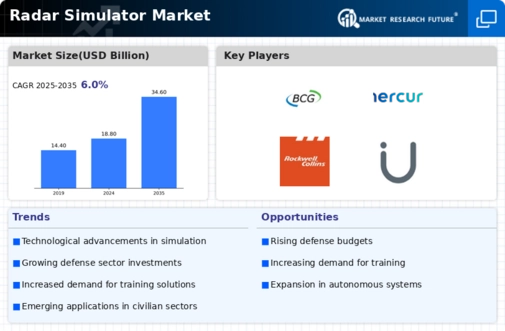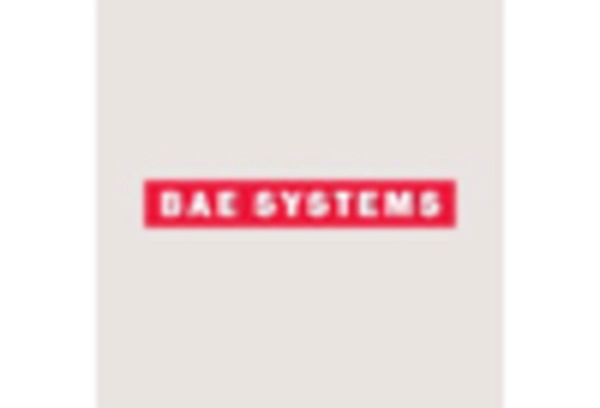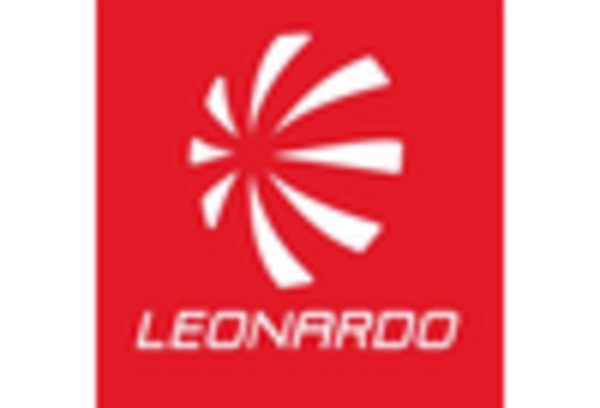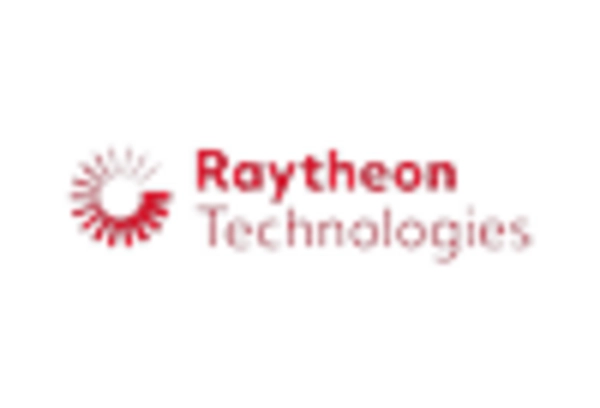Market Share
Introduction: Navigating the Competitive Landscape of Radar Simulation Technology
The Radar Simulator Market is experiencing a transformative phase driven by rapid technology adoption, evolving regulatory frameworks, and heightened consumer expectations for safety and efficiency. Key players, including OEMs, IT integrators, infrastructure providers, and innovative AI startups, are fiercely competing for market leadership by leveraging advanced capabilities such as AI-based analytics, automation, and IoT integration. These technology-driven differentiators are not only enhancing operational efficiencies but also reshaping customer engagement and service delivery models. As organizations increasingly prioritize green infrastructure and sustainable practices, the competitive dynamics are further influenced by the need for compliance with emerging environmental regulations. Regionally, significant growth opportunities are emerging in Asia-Pacific and North America, where strategic deployments are anticipated to align with defense modernization initiatives and smart city developments, setting the stage for a robust competitive landscape through 2024–2025.
Competitive Positioning
Full-Suite Integrators
These vendors provide comprehensive radar simulation solutions, integrating various technologies for a complete user experience.
| Vendor | Competitive Edge | Solution Focus | Regional Focus |
|---|---|---|---|
| Harris Corporation | Strong defense and aerospace expertise | Integrated radar simulation systems | North America, Europe |
| Rockwell Collins | Advanced avionics and simulation capabilities | Radar and avionics simulation | Global |
| Adacel Technologies Limited | Focus on air traffic management solutions | Radar simulation for air traffic control | Australia, North America |
Specialized Technology Vendors
These vendors focus on niche radar simulation technologies, offering specialized solutions tailored to specific applications.
| Vendor | Competitive Edge | Solution Focus | Regional Focus |
|---|---|---|---|
| Cambridge Pixel Ltd | Innovative software solutions for radar processing | Radar processing and simulation software | Global |
| Micro Nav Limited | Expertise in air traffic control simulation | Radar simulation for ATC training | UK, Europe |
| Presagis Canada Inc. | High-fidelity simulation environments | Modeling and simulation software | North America, Europe |
Infrastructure & Equipment Providers
These vendors supply the hardware and infrastructure necessary for radar simulation, enhancing overall system performance.
| Vendor | Competitive Edge | Solution Focus | Regional Focus |
|---|---|---|---|
| AAI Corporation | Robust military simulation systems | Radar simulation hardware and systems | North America |
| Buffalo Computer Graphics | High-performance graphics solutions | Visual simulation and graphics rendering | North America |
| Mercury Systems | Advanced embedded computing solutions | Radar processing hardware | North America |
| Ultra Electronics Inc. | Specialized in defense and security applications | Radar and electronic warfare systems | UK, North America |
| Acewavetech | Cutting-edge radar technology development | Radar simulation and testing solutions | Asia-Pacific |
| ARI Simulation | Tailored simulation solutions for defense | Custom radar simulation systems | India, Asia-Pacific |
Emerging Players & Regional Champions
- AeroSim (USA): Specializes in high-fidelity radar simulation software for military training applications, recently secured a contract with the U.S. Air Force for advanced radar training systems, challenging established vendors by offering more customizable solutions.
- SimRadar Technologies (Germany): Focuses on radar simulation for automotive applications, recently partnered with several European automotive manufacturers to enhance their autonomous vehicle testing, complementing traditional defense-focused vendors by expanding the market scope.
- RadTech Innovations (India): Provides cost-effective radar simulation tools for academic institutions and small defense contractors, recently implemented a pilot program with a local defense startup, challenging larger vendors by offering affordable and accessible solutions.
- SkyWave Systems (Australia): Develops radar simulation systems for maritime applications, recently won a contract with the Australian Navy for training exercises, complementing established vendors by focusing on niche maritime needs.
Regional Trends: In 2023, there is a notable increase in regional adoption of radar simulation technologies, particularly in North America and Europe, driven by defense modernization efforts and the rise of autonomous systems in various sectors. Technology specialization is shifting towards customizable and cost-effective solutions, with emerging players focusing on specific applications such as automotive and maritime, thereby challenging traditional defense-oriented vendors.
Collaborations & M&A Movements
- Northrop Grumman and BAE Systems entered into a partnership to develop advanced radar simulation technologies aimed at enhancing military training programs, thereby strengthening their competitive positioning in defense contracts.
- Leonardo S.p.A. acquired the radar simulation division of a smaller tech firm to bolster its capabilities in electronic warfare simulations, which is expected to increase its market share in the European defense sector.
- Raytheon Technologies and L3Harris Technologies collaborated to integrate their radar simulation systems, aiming to create a comprehensive training solution for military and civilian applications, enhancing their competitive edge in the growing simulation market.
Competitive Summary Table
| Capability | Leading Players | Remarks |
|---|---|---|
| Biometric Self-Boarding | Thales, SITA | Thales has implemented biometric self-boarding solutions at major airports, enhancing passenger flow and reducing wait times. SITA's Smart Path technology has been adopted in multiple international airports, showcasing its effectiveness in streamlining the boarding process. |
| AI-Powered Ops Mgmt | Honeywell, Raytheon | Honeywell's AI-driven operations management systems have been successfully integrated into airport operations, improving efficiency and resource allocation. Raytheon's advanced analytics tools provide real-time insights, enabling proactive decision-making in radar operations. |
| Border Control | Gemalto, Indra | Gemalto's border control solutions leverage biometric verification to enhance security and speed up processing times. Indra's systems have been deployed in various countries, demonstrating their capability to adapt to different regulatory environments. |
| Sustainability | Siemens, Northrop Grumman | Siemens is leading initiatives in sustainable radar technologies, focusing on energy-efficient systems. Northrop Grumman has developed eco-friendly radar solutions that minimize environmental impact while maintaining high performance. |
| Passenger Experience | Amadeus, IBM | Amadeus enhances passenger experience through integrated travel solutions that streamline the journey from booking to boarding. IBM's Watson AI is utilized in various airports to provide personalized services, improving overall passenger satisfaction. |
Conclusion: Navigating the Radar Simulator Landscape
The Radar Simulator Market in 2023 is characterized by intense competitive dynamics and significant fragmentation, with both legacy and emerging players vying for market share. Regional trends indicate a growing demand in Asia-Pacific and North America, prompting vendors to tailor their strategies accordingly. Legacy players are leveraging established reputations and extensive R&D capabilities, while emerging companies are focusing on innovative technologies such as AI and automation to differentiate themselves. As the market evolves, capabilities in sustainability and flexibility will become critical determinants of leadership, compelling vendors to adapt their offerings to meet the changing needs of customers. Decision-makers must prioritize partnerships and investments in these key areas to maintain a competitive edge in this rapidly shifting landscape.


 Source Secondary Research, Primary Research, Market Research Future Database, and Analyst Review
Source Secondary Research, Primary Research, Market Research Future Database, and Analyst Review






Leave a Comment